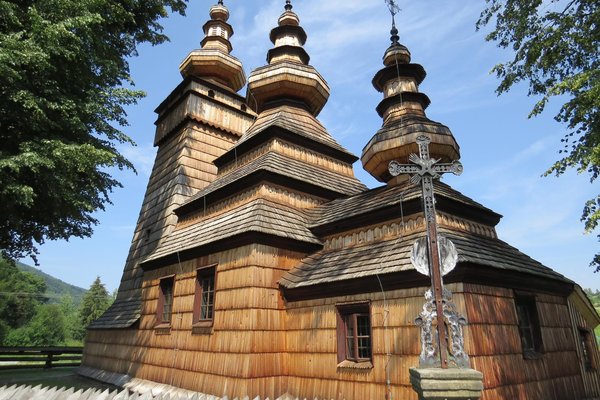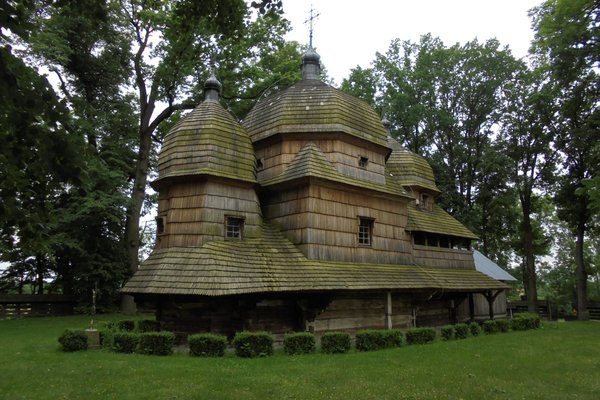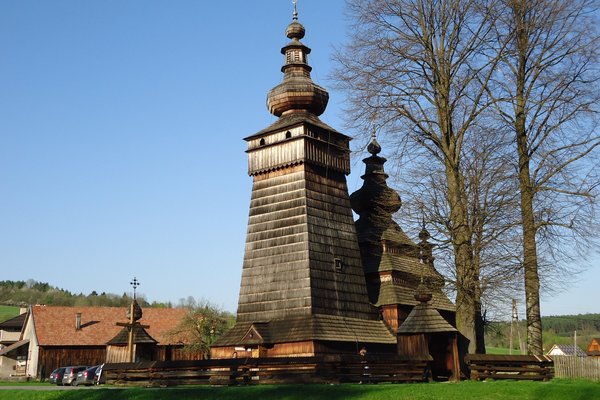Poland, Ukraine
Wooden Tserkvas of the Carpathian Region
The Wooden Tserkvas of the Carpathian Region in Poland and Ukraine comprise wooden churches built by horizontal log construction.
The 16 churches are located in isolated parts of the Carpathian Mountains. They were built in the local architecture by communities of the Eastern Orthodox and Greek Catholic faiths in the 16th to 19th centuries. They can be divided into four groups of different ethnographic architectural traditions.
Community Perspective: “The sites are an amazing mixture of outstanding architecture, beautiful wall paintings and interior decorations, and a picturesque landscape.” The churches in Poland are covered by most reviewers, while those in Ukraine have been described by Ian and Els (Zhovkva) and Tsunami (Nyzhnii Verbizh).
Site Info
Official Information
- Full Name
- Wooden Tserkvas of the Carpathian Region in Poland and Ukraine (ID: 1424)
- Status
-
Inscribed 2013
Site history
History of Wooden Tserkvas of the Carpathian Region
- 2013: Inscribed
- Inscribed
- Type
- Cultural
- Criteria
- iii
- iv
Links
- UNESCO
- whc.unesco.org
- Official
-
- drewniana.malopolska.pl — Kwiaton
- drewniana.malopolska.pl — Owczary
- drewniana.malopolska.pl — Powroznik
All Links
UNESCO.org
- whc.unesco.org — whc.unesco.org/
Official Website
- drewniana.malopolska.pl — Kwiaton
- drewniana.malopolska.pl — Owczary
- drewniana.malopolska.pl — Powroznik
- drewniana.malopolska.pl — Brunary Wyzne
Forum Discussion
- worldheritagesite.org — Polish Wooden Churches
Community Information
- Community Category
- Religious structure: Christian
Travel Information
Red Zone Travel Advisory
Ukraine parts fully off-limits
Recent Connections
-
Perfect Inscriptions
2013 -
Red Zone Travel Advisory
Ukraine parts fully off-limits
-
Untranslated Toponyms
Tserkva (Церква) is the main word for "…
Connections of Wooden Tserkvas of the Carpathian Region
- Geography
- Trivia
-
-
Minority communities
most of the Tserkvas in the Ukraine belong to the Hutzul minority -
Depicted in Mizielinska Maps
ChotyniecSee i.pinimg.com
-
- Architecture
- Damaged
-
-
Damaged in World War I
Bell Tower of the Tserkva of the Birth of the Blessed Virgin Mary (Chotyniec, Poland)
-
- World Heritage Process
- Religion and Belief
-
-
Eastern Catholic Churches
Greek Catholic
-
- Constructions
-
-
Freestanding Bell Tower
Several
-
- WHS on Other Lists
-
-
Europa Nostra Award
Conservation work of the Greek Catholic Parish Church of the Protection of the Mother of God in Owczary -
World Monuments Watch (past)
St. Paraskewa Church (2012)
-
- Timeline
-
-
Built in the 16th century
built between 16th and 19th centuries (Brief Description)
-
- WHS Hotspots
- Visiting conditions
-
-
Red Zone Travel Advisory
Ukraine parts fully off-limits
-
- WHS Names
-
-
Untranslated Toponyms
Tserkva (Церква) is the main word for "Church" in Ukrainian. Although churches in both Ukraine and Poland are inscribed only the Ukrainian word is used in the title. The "generic" word for a "Church" in Polish is "kościoł" (so the Wooden Churches of Southern Małopolska are called "kościoły drewniane" = Wooden Churches). The word "Cerkiew" is used specifically for Orthodox/Greco-Catholic churches which the Polish "Tserkvas" originally were (though most have subsequently become Roman Catholic).
-
News
No news.
Recent Visitors
Visitors of Wooden Tserkvas of the Carpathian Region
- Adrian Turtschi
- Afshin Iranpour
- Alexander Barabanov
- Alexander Lehmann
- Ali Zingstra
- Antonio J.
- Argo
- Artur Anuszewski
- Aspasia
- Atila Ege
- Bamse
- BaziFettehenne
- Bill Maurmann
- Bin
- Carlos Sotelo
- Cezar Grozavu
- chenboada
- Cheryl
- Christoph
- Christravelblog
- Cirene Moraes
- Clyde
- Colossus
- ctravel
- czesioszpachelka
- Dagmara
- Daniel Chazad
- Dan Pettigrew
- David Berlanda
- debatecoach
- Dimitar Krastev
- Dolemite92
- Dorejd
- Elia Vettorato
- Elisabeth Fransisca Situmorang
- Els Slots
- Errol Neo
- Eva Kisgyorgy
- Fan Yibo
- Felicité
- Femke Roos
- Filip Murlak
- George Gdanski
- GeorgeIng61
- Harald T.
- Harry Mitsidis
- henrik_hannfors
- Highlander
- Hubert
- Iain Jackson
- Ian Cade
- Ivan Rucek
- Jakob F.
- Janina Lehmann
- Janos
- Jarek Pokrzywnicki
- Jezza
- Joel on the Road
- Jonas Kremer
- Jonas Martinsson
- Joyce van Soest
- KarenBMoore
- Kbecq
- Ken DJ
- KentishTownRocks
- Kerékgyártó
- Kurt Lauer
- Lara Adler
- Lisu Marian
- Loic Pedras
- Luboang
- Luis Filipe Gaspar
- Lukasz Palczewski
- Maciej Gil
- Maciej Gowin
- Malgorzata Kopczynska
- Małgosia Łupicka
- marcel staron
- Martina Rúčková
- Matejicek
- Mateusz
- MaxHeAnouBen
- MH
- Michael Ayers
- Mikko
- Miloš Tašković
- MMM
- nan
- Nick M
- Nihal Ege
- PabloNorte
- Patrik
- Paul Schofield
- Petteri
- Philipp Leu
- Philipp Peterer
- Piotr Wasil
- Rafał Kałczuga
- Randi Thomsen
- Remigiusz
- Reza
- Roger Ourset
- Roman Bruehwiler
- Roman Raab
- serghei.belous
- Sergio Arjona
- Shandos Cleaver
- Slavi
- Solivagant
- Stan
- Stanislaw Warwas
- Svein Elias
- Szabolcs Mosonyi
- Szucs Tamas
- Tamara Ratz
- Taotao Chen
- Tarquinio_Superbo
- Tetena
- Tevity
- Thomas Buechler
- Thomas van der Walt
- Tim Allen
- triath
- Tsunami
- usagi1974
- Vernon Prieto
- Walter
- Wojciech Fedoruk
- wrung24
- YaroMir
- Yevhen Ivanovych
- Zhenjun Liu
- Złoty Tłok Czesław
- Zoë Sheng
Community Reviews
Show full reviewsTsunami
Wooden Tserkvas of the Carpathian Region
Wooden Tserkvas of the Carpathian Region (Inscribed)
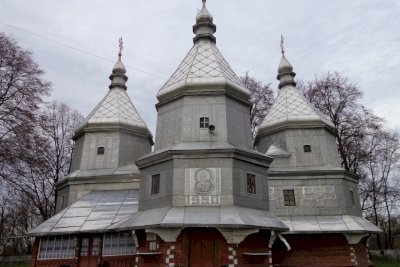
There are 8 of these tserkvas in Ukraine. Besides the one in Zhovkva, which is just outside of Lviv, none has written a report on others yet, so I will briefly report on the Church of the Nativity of the Blessed Virgin Mary in Nyzhnii Verbizh near Kolomyya, Ukraine.
During my 2 month-long trip to Europe from Los Angeles in autumn 2013 (the year it was inscribed) I walked across the border from Sighetu in Romania to Solotvyno in Ukraine, took a mini bus to Rakhiv and another one to the Hutsul "city" of Yaremche. Between Rakhiv and Yaremche there is another one of the 8 tserkvas at Yasinya, but I did not have time to stop there. After a night in Yaremche (of which I was curious because it was the main setting for the most famous Ukrainian film in history, Shadow of Forgotten Ancestors (1965) by Georgia-born, Armenian / Soviet filmmaker Sergei Parajanov who mainly worked in Ukraine), I headed to Chernivtsi by bus with a stop in Kolomyya only for 90 min.. Once at the Kolomyya bus station, because the church is still 5 km away in the village of Nyzhnii Verbizh, I immediately took a taxi.
According to the UNESCO site, this church and the aforementioned one in Yasnya are the two Hutsul-type churches, which is one of the 4 subcategories of this group of 16 churches. It was more unusual looking than I expected with 5 octagonal towers with pear cupolas on top, …
Keep reading 0 commentsIan Cade
Wooden Tserkvas of the Carpathian Region
Wooden Tserkvas of the Carpathian Region (Inscribed)
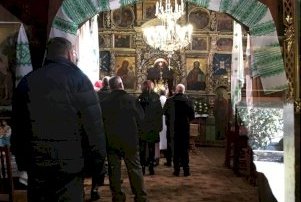
My first visit to one of the plethora of small wooden churches in this corner of Europe that provide three separate World Heritage Sites, was a rather enjoyable, if short experience, in a town that I would otherwise have no real reason to be in.
I hadn’t planned to visit this site, but an early landing at Lviv’s new airport and very swift passport control meant I was curbside about an hour before I thought I would be. Off the cuff I looked at the map on my phone I realised that the Tserkva of the Holy Trinity in Zhovkva was only about 45 minutes away, all that time our coommunity put into plotting sites on a map suddenly paid off!
A quick negotiation with a taxi driver, in some combination of English, Ukrainian, Russian and me taking wild stabs at the few words of Czech I know and hoping they would make sense meant I was soon in the back of a Skoda heading over the potholes and cobbles of the Lviv ring road.
About 35 minutes later I was deposited at a this tiny church with reassurances that the driver would be back in 15 minutes.
This 15 minutes was actually probably three times the amount of time I needed. As it was a beautiful Sunday morning there was a service happening inside. Even if I was of a mind to visit during the sermons, the church is so small there wasn’t even a …
Keep reading 0 comments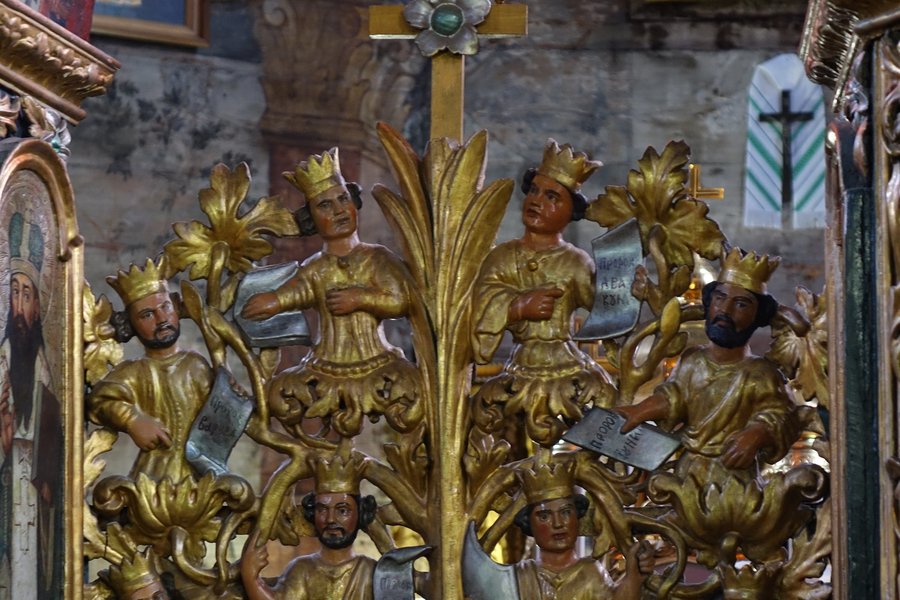
The Wooden Tserkvas in the Polish part of the Carpathians have already been well-covered by the reviewers active on this website. I visited 6 of them myself in 2015. However, 8 of the inscribed tserkvas (churches) lie just across the border in Ukraine. No one has written a report on one of those yet. As I had half a day to spare after visiting L’viv, I hired a taxi to take me to the wooden Holy Trinity Church in Zhovkva – part of the Later Halych Group of the inscribed Ukrainian tserkvas.
Zhovkva is a town of 13,000 inhabitants, about 30km northwest of L’viv. The drive takes just half an hour and doesn’t bring very remarkable scenery. The roads out of L’viv are potholed, and many of the streets leading from the main streets into villages are still unpaved. Inspired by the Polish churches that lie in sometimes idyllic rural settings, I hoped to get a glimpse of the Ukrainian countryside by going to Zhovkva. It didn’t turn out to be that way, however.
The Holy Trinity Church lies beside the main road that leads from L’viv to Zhovkva city center. I had brought a print with me, including the name of the church in Ukrainian and a picture of it, just to be sure. But it cannot be overlooked, and is even signposted in English with the same type of bilingual signs that point to the various sights in L’viv. It looks a bit out of place in its …
Keep reading 0 commentsEls Slots
Wooden Tserkvas of the Carpathian Region
Wooden Tserkvas of the Carpathian Region (Inscribed)
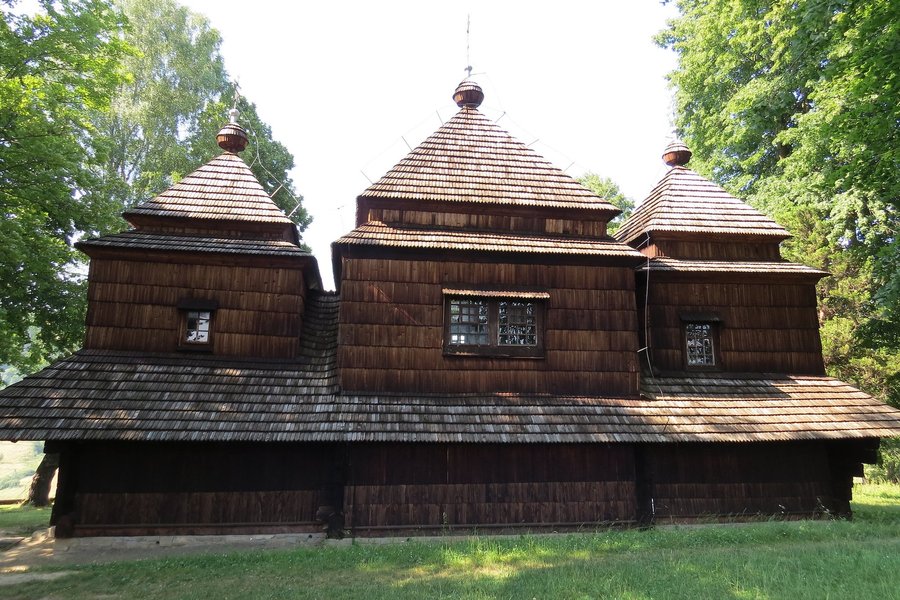
The Wooden Tserkvas of the Carpathian Region are 16 wooden churches in the border region of Poland and Ukraine. There are 8 inscribed churches in each country. During my long weekend in southeastern Poland, I focused on the Polish ones. Beforehand, I plotted them all on a map, and as you can see in the figure, it will take a long drive to cover them all. Two tserkvas straddle the Ukrainian border below Zamosc, and I was tempted to drive even further north to include that WHS also. But it still is a 1.5-hour drive from Radruz. Daytrips to L’viv in Ukraine are also advertised from the larger cities in this region, so this is a true hotspot.
In the end, I only had time for the 6 in southern Poland, those that lie near the border with Slovakia. Most of the previous reviewers seem to have visited the cluster of 4 below Gorlice, although John Booth of course made it even to the most remote ones by public transport!
‘Tserkva’ means ‘church’ in the Ukrainian language. Most of these churches were built for the Ukrainian Greek Catholic Church, an Eastern Rite Catholic church (sharing traditions with the Orthodox churches but acting in full communion with the Holy See). Since the Ukrainian population left the area after WWII, almost all tserkvas in Poland have come into use as Roman Catholic churches. They have retained their traditional (orthodox) iconostases, and the catholic service is performed in front of those. This mix …
Keep reading 0 commentsHubert
Wooden Tserkvas of the Carpathian Region
Wooden Tserkvas of the Carpathian Region (Inscribed)
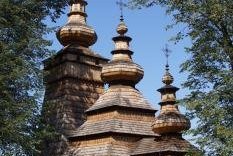
The tserkvas in the Polish Carpathians were definitely our favourites among the three wooden church WHS and one of the highlights of our trip through Lesser Poland and Slovakia in August 2014. The sites are an amazing mixture of outstanding architecture, beautiful wall paintings and interior decorations, and a picturesque landscape. The WHS consists of sixteen wooden churches, examples of four different architectural styles each representing a specific ethnographic tradition. We visited the five westernmost churches, all of the so-called Lemko type.
The distinctive feature (compared to the other two inscriptions) is the tripartite ground plan - porch, nave and chancel - surmounted by octagonal cupolas, the highest cupola is above the porch, with the roof sloping downward towards the chancel. Inside, I was particularly impressed by the magnificent and colourful Iconostases.
Four of the churches are close together, within a driving distance of about 75 km, near the Slovakian border and not far from the WHS Bardejov in Slovakia. We enjoyed our ride in the hilly countryside, our tom-tom did a good job, only once it suggested an impassable dirt road. All churches were open to visitors and the entrance was free. The people in this region seemed to be very proud of their churches, they willingly showed us everything and were very happy when we appreciated the quality of the art works and the architecture and the good state of preservation.
Some specific comments on the individual sites:
Owczary: a very nice and typical example of the tripartite …
Keep reading 0 comments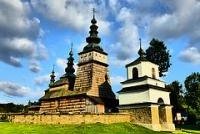
I visited this WHS in September 2014. I only visited the 4 out of the 8 tserkvas of Poland but I think I got the gist of the OUV of this transnational WHS. That said, I'd really love to visit the tserkvas of Ukraine as well as the remaining tserkvas of Poland as their architecture and location make them truly hidden gems. I had put a lot of preparation work prior to visiting this WHS. From the UNESCO website I got the coordinates of the 4 tserkvas I wanted to visit and saved them on my navigator. This turned out to be a very wise decision as sign posts are non-existant while most of them are hidden by tall trees and are quite isolated. The tserkva of St. Michael the Archangel in Brunary Wyzne was closed when I visited so I took some quick pictures knowing that it wasn't the most beautiful tserkva. Next I visited the tserkva of St. Jacob the Younger in Powroznik where I was welcomed by a young priest. Entrance was free and shortly after I went inside the church, the priest showed me the way to the small sacristy with incredibly beautiful paintings on the wooden walls. Of all the tserkvas I visited this one had the best interior by far. The exterior was really beautiful too but it was almost impossible to take photos of it as it hidden behind the tall trees that kept it hidden well and always in the shade. Perhaps …
Keep reading 0 commentsjohn booth
Wooden Tserkvas of the Carpathian Region
Wooden Tserkvas of the Carpathian Region (Inscribed)
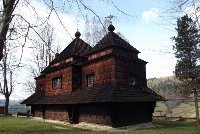
In October I visited 5 of the wooden Tserkvas in Poland:
Radruz : reached by bus from Jaroslaw and Zamosc changing at Lubaczow. This church was open for visits. The altar screen was elaborately decorated.
Chotyniec : reached by bus from Jaroslaw. A very dusty, noisy village with fleets of trucks roaring through. The wooden church was hidden in trees behind a newer one but was closed. It hat an unusual external balcony.
Brunary : reached by bus from Krosno, changing at Gorlice. Closed at the time of my visit.
Powroznik : reached by bus or train from Krakow, changing at Nowy Sacz. Closed at the time of my visit.
Smolnik (pictured) : reached by bus from Krosno, changing at Sanok. Located in the Bieczczady, a scenic part of the Carpathian mountains, with the church sited on a hill overlooking the village. Closed at the time of my visit, but a grille door allowed the interior to be viewed.
Keep reading 0 commentsKarito Vies
Wooden Tserkvas of the Carpathian Region by Allison Vies
Wooden Tserkvas of the Carpathian Region (Inscribed)
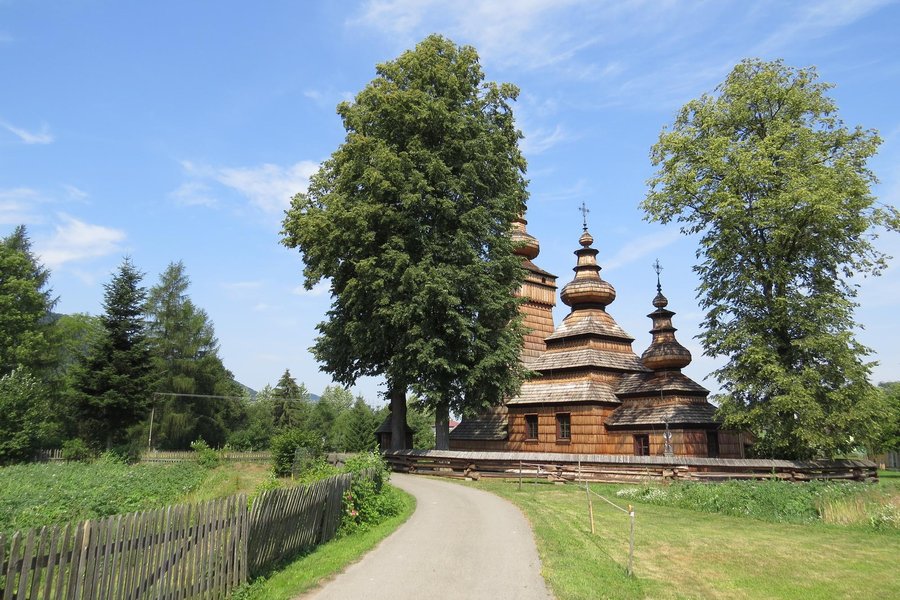
4 of the churches are located close to the Slovak WHS Bardejov, so visiting them can easily be combined with the visit of the town and even 2 other wooden church WHS: the Malopolska churches and the churches of the Slovak Carpathians. The churches are located in rather remote villages and at least in October you have to be lucky to find a church to be open outside the mess. A very nice man in Kwiaton saw that I was taking pictures of the outside of the church from every angle and let me in. The inside was richly painted. My highlight was the fake marvel walls.
I think the churches deserve their spot on the list, but I personally did not see the difference between these churches and the churches in the Slovak Carpathians. Further, almost every tiny village in this region has its wooden church. You could spend weeks there, visiting churches.
To reach the churches I strongly suggest a car and a navigation system. The churches I tracked down were visible from the street. Each church has its particular shape, so I recommend visiting more than one.
Keep reading 0 comments
